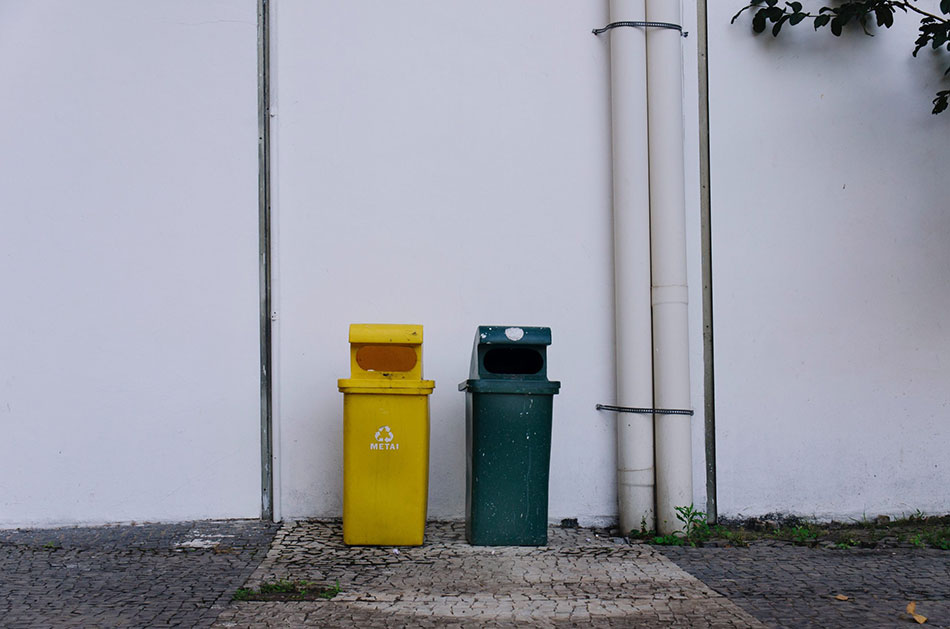Since you were young, it’s been ingrained in you that recycling is essential for our planet. Your milk carton? Goes in the recycling bin. Your empty yogurt cups? Recycled! Cardboard boxes? Drop it in the recycling bin.
And now you can say you’ve done your part for the planet!
Unfortunately, it isn’t that simple and it doesn’t actually solve as much as we want it to. Or said another way, we aren’t actually solving the root issue when we recycle. Virgin materials will still be used to create new items, and what you’ve recycled may not actually get recycled due to municipality regulations and/or due to contamination–whatever your neighbors and/or others have dropped into the recycling bin as well.
In the United States, the recycling landscape is a bit of a mixed bag, with numerous challenges along the way. Do you know where your recyclables actually go?
A day in the life of recycling
When you toss your aluminum cans, plastic bottles, and paper products into the recycling bin, you expect them to have a second life because that’s what you’re told. Sadly, that’s not always the case.
Once your recyclables are picked up, they’re sent to recycling centers. These centers sort and process the materials, preparing them for the next step. Some materials are transformed into new products, while others are exported to countries like China, which used to be a significant player in recycling until it imposed stricter regulations in 2018.
Only 9% of items recycled actually get recycled. 9% is nothing when you see full recycling bins along your street or within your building complex. One time, I saw a TV in the recycling bin in my complex…what!
Ongoing challenges
In the United States, recycling challenges include product contamination, limited infrastructure, and a fluctuating market demand of materials. All of these make it so that staying on top of what can and cannot be recycled, how to physically recycle something, and the convenience of it is really challenging to stay on top of.
Contamination
Contamination happens when non-recyclable items get mixed in with recyclables, making the sorting process more difficult. Similarly, it’s imperative that you clean out your recycled items before dropping them in a bin. Those almond butter containers can’t have an excess of almond butter left inside them if you want it to make it through the recycling process. Same with those tomato sauce jars or cans of beans.
Subsequently, are you up to date on what can and can’t be recycled?
Glass, aluminum, paper and cardboard are all pretty standard recyclable materials–as long as they are free and clean of other materials (this includes tape on cardboard boxes!) Where it gets confusing is when it comes to plastics. Those numbers on the bottom of plastic containers are called resin identification codes, and they indicate the type of plastic used. These numbers range from #1 (PET) to #7 (Other). Unfortunately, the presence of these numbers doesn’t guarantee that an item will be recycled. It depends on the recycling facility’s capabilities and local regulations.
So, depending on where you live, that plastic bottle you diligently put in the recycling bin might not be living its best life after all…
Limited infrastructure & fluctuating demand
Insufficient recycling facilities and low demand for certain materials often lead to recyclables ending up in landfills. The pandemic played a big part in this as well considering many didn’t want secondhand with trying to stay safe and virus free. This is pretty consistent across the entire US.
What makes it more challenging is that different cities and regions are able to recycle some items that other areas are not. Do you know what you can and cannot recycle in your district? What’s recyclable in one city may not be in another.
This lack of standardization can confuse consumers and increase contamination rates. To tackle this issue, it’s been left up to you to stay up-to-date and current on what is and is not recyclable in your area.
Does it really end up in landfills though?
Even with all your good intentions, a significant amount of recyclable material still ends up in landfills. According to the U.S. Environmental Protection Agency (EPA), in 2018, more than 146 million tons of waste were sent to landfills. That’s a lot of missed opportunities for recycling! Especially when plastics accounted for over 18% and paper and paperboard made up about 12%.
However, there are many efforts underway to improve recycling infrastructure, reduce contamination, and boost domestic recycling markets. Consumers can do their part by being more aware of what they’re recycling and striving to reduce waste in the first place. I.e. making more conscious purchasing decisions.
Questions you can ask yourself before purchasing something can include:
- Do I really need this?
- Where will this go if I purchase it?
- Will this help with a sustainable lifestyle?
- What joy will this item bring me?
- Will I still use this item in a year? In 5 years?
- Do I have something at home like this already?
- Does this item truly serve a purpose or do I just like the aesthetic?
- Will this item be thrown away after one use?
In other words, rather than focus on recycling at the end of life, why not focus on reducing your intake and reusing what you already have?
To learn more about LimeLoop’s reuse programs, schedule a call with one of our Reuse Specialists today.

